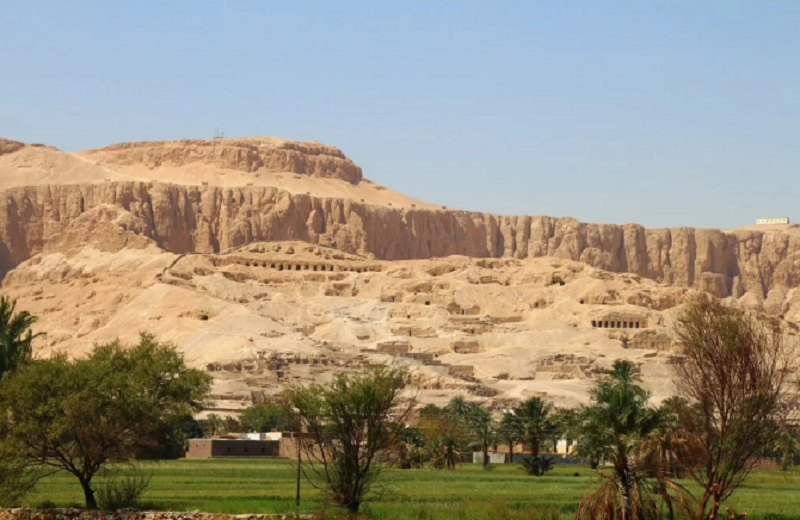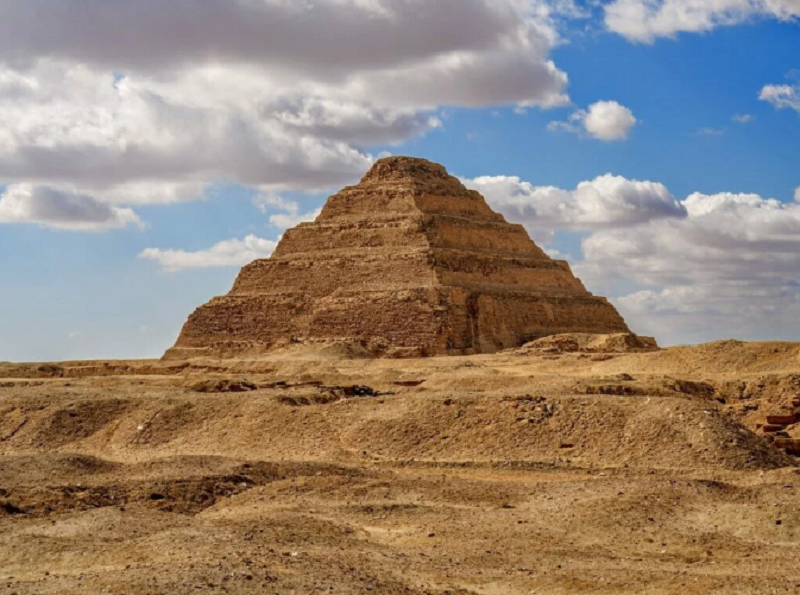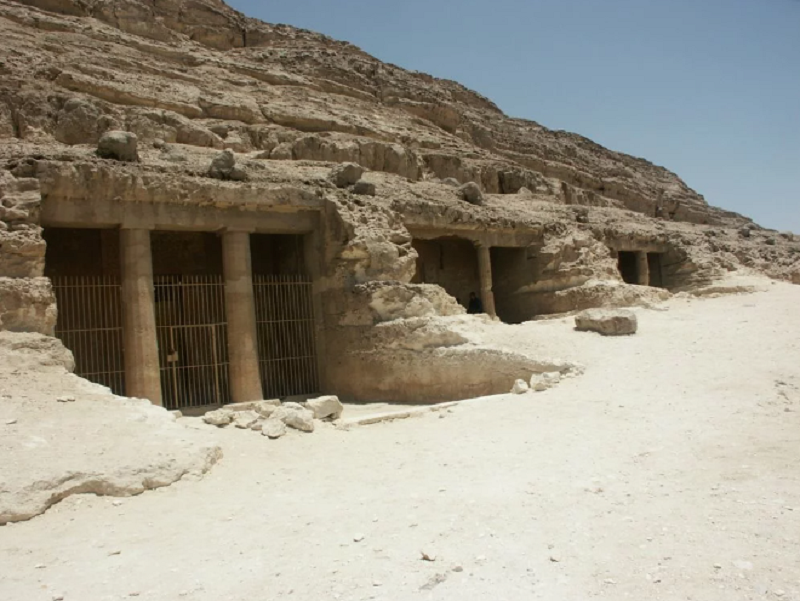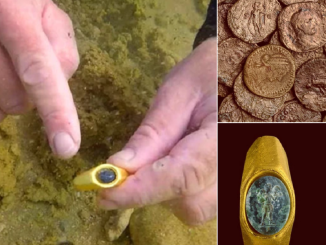11. Karnak Temple: Monument of God
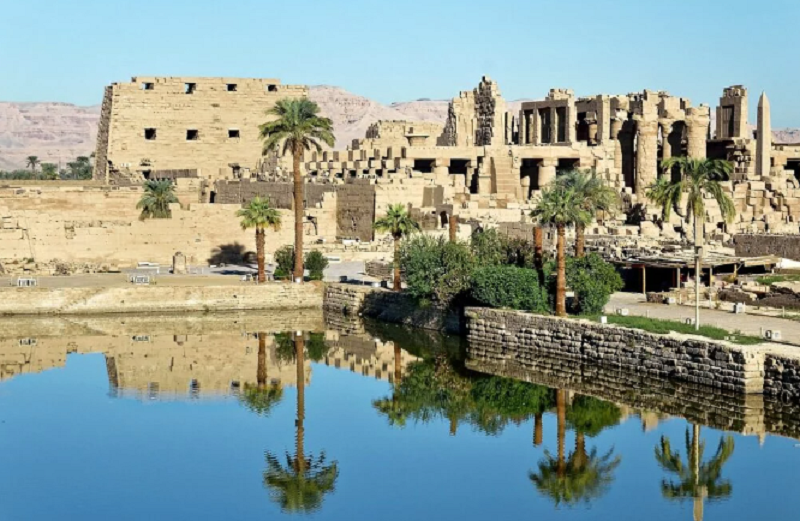
Karnak Temple
Karnak Temple is an awe-inspiring complex dedicated to many different gods, mainly focusing on the god Amun. This vast temple, located in Thebes (modern-day Luxor), was built over several centuries, starting during the Middle Kingdom (c. 2055-1650 BC) and extending through the New Kingdom.
Karnak represents a fusion of architectural style and artistic innovation. Its grandeur is emphasized by colossal statues, towering obelisks, elaborately decorated halls and a sacred lake. It served as a center of religious worship, pilgrimage, and administrative activities.
This monumental complex is a testament to the religious fervor of the ancient Egyptians and their unwavering devotion to their gods.
12. Valley of the Kings: Eternal Royal Tombs
Valley of the Kings, Deir el-bahri, Egypt
The Valley of the Kings, located on the west bank of the Nile River near Luxor, was the burial place of many pharaohs and nobles during the New Kingdom (circa 16th-11th centuries BC).
The Valley of the Kings is famous for its stone tombs, the resting place of the pharaohs of the 18th, 19th and 20th dynasties.
This is an archaeological treasure trove, whose most famous occupant was the young Pharaoh Tutankhamun. The tombs are decorated with intricate hieroglyphs, detailed paintings and precious artifacts, providing remarkable insight into the religious beliefs and burial practices of ancient Egypt .
The Valley of the Kings, hidden in the desolate desert, is a testament to the Egyptians’ pursuit of eternal life and their determination to preserve the legacy of their rulers forever.
13. Step Pyramid of Djoser: The Birth of Pyramid Architecture
Djoser Pyramid
Djoser’s Step Pyramid, located at Saqqara near Memphis, Egypt, is one of the earliest pyramid structures in Egypt. It was designed by legendary architect Imhotep in the 27th century BC, marking a pivotal moment in architectural history. This groundbreaking pyramid is a series of six stepped layers, like a giant wedding cake, and was originally about 6 stories high.
It served as the final resting place of Pharaoh Djoser and represents the transition from mastaba tomb to true pyramid. Imhotep’s innovative design not only signified the pharaoh’s ascension to the afterlife but also symbolized the king’s divine attributes.
14. Luxor Temple: Praise to the Gods
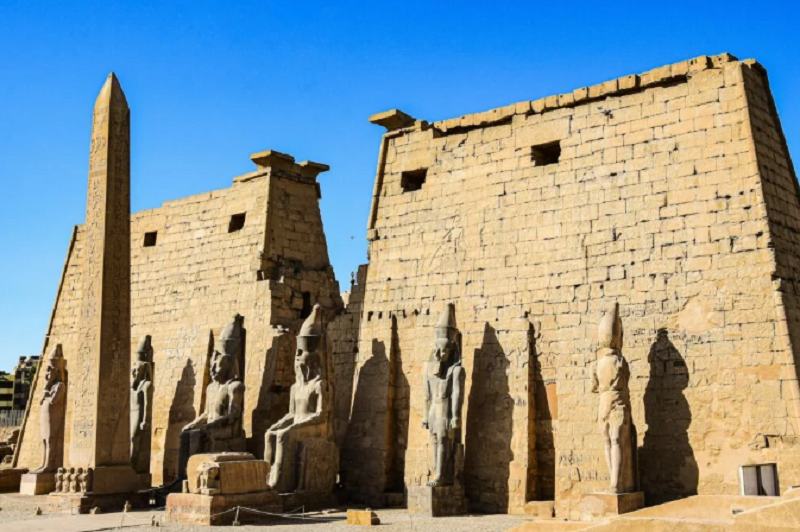
Luxor Temple
The Luxor Temple, located on the east bank of the Nile River in modern-day Luxor, is a large and monumental temple complex that dates back to the New Kingdom, with construction spanning several dynasties. The temple mainly worships god Amun, his consort Mut and their son Khonsu.
Luxor’s grandeur is expressed through its grand entrance, Avenue of the Sphinxes, and majestic obelisks. Notable pharaohs, including Amenhotep III and Ramses II, made significant additions to this magnificent temple.
Luxor is a place of worship, ceremony and celebration, and it continues to captivate visitors with its awe-inspiring architecture and the deep religious significance it held for the ancient Egyptians.
15. Beni Hasan Tomb: Window into everyday life
Tomb of Beni Hasan | Photo source: egyptiancoffins.org
The Tombs of Beni Hasan, a series of stone tombs located in Middle Egypt, date from the Middle Kingdom (c. 2055-1650 BC).
These tombs provide invaluable insights into the daily lives, activities, and social structures of ancient Egyptian provincial elites. The tombs contain remarkable scenes and inscriptions describing hunting, farming, fishing and various aspects of daily life, along with detailed biographical information about the occupants. tomb.
The art in these tombs is famous for its vivid representation of life during the Middle Kingdom, giving us a unique perspective into the lives and aspirations of non-royal individuals in Ai Ancient Egypt.
